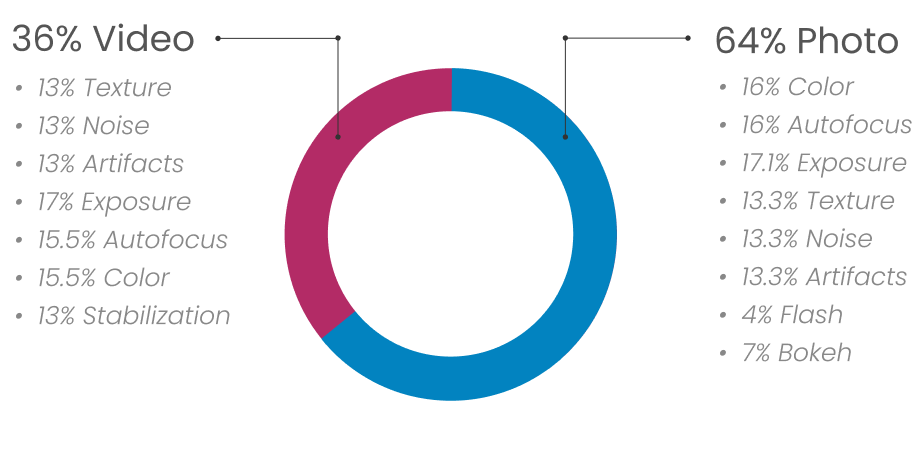Photo 70%
We evaluate the still image quality delivered by the front camera for individual subjects but also with duo and groups of people.
Tests are performed:
-
- Using the default mode
- Both in portrait and landscape modes
- Handheld motion is simulated with a dedicated shaking platform.
- In an extended range of lighting conditions from 1lux for lowlight to 1000lux for bright light conditions and even higher for actual outdoor scenes
Image quality is measured at various distances, representing various selfie use cases:
-
- Close up portraits – at 30 cm, when the photographers’ face takes up the largest part of the frame and the rendering of the background is irrelevant
- Self-portrait – at 55 cm, at arm’s length. The photographer remains prominent, but the background contains elements that the user wants to capture – a particular monument for example, this distance is also very useful for duofies, when two people are in the photo.
- Group portrait – at 120 cm (with a selfie stick). Users wish to capture the group, but also as much as the background scenery as possible
To evaluate photo, assessments are made on a total of eight technical quality attributes:
Exposure
How well the camera properly adjusts to and captures the brightness of the subject and the background, as well as if the contrast is unusually high or low. We particularly focus on face exposure and contrast, as well as skin tone rendering, which are tested on a large spectrum from deep to fair to light
Color
For Selfies, we particularly observe the various skin tone renderings but also the overall color rendering and the white balance, which is intended as how accurately the camera can reproduce color in a variety of lighting conditions, as well as how pleasing its color rendering is to its viewers
Focus
How good the camera is at focusing on the subject at different shooting distances. We also evaluate the depth of field to ensure good sharpness even when you’re taking a group selfie photo.
Texture & Noise
How well the front camera renders the details of a captured scene, but also how much noise is visible in different parts of the image.
Artifacts
Any effect appearing in an image that is not present in the original imaged object (distortion for example)
Flash
It evaluates the overall image quality and the undesired effects observed when taking photos with the flash on. In the case of selfie, various technologies can be used for flash such as screen flash or classical LED flash. The protocol evaluates the final image quality without considering the technologies used.
Bokeh
How well the camera separates the subject from the background when taking portraits
Important note:
Our range of acceptable renderings for all attributes in various light conditions are based on the findings gathered from our multi-cultural focus groups. We believe that within this inclusive scope, the risk of bias is eliminated when evaluating a smartphone camera for a particular attribute. In keeping with this approach to testing, we do not evaluate manufacturers’ signature renderings.



